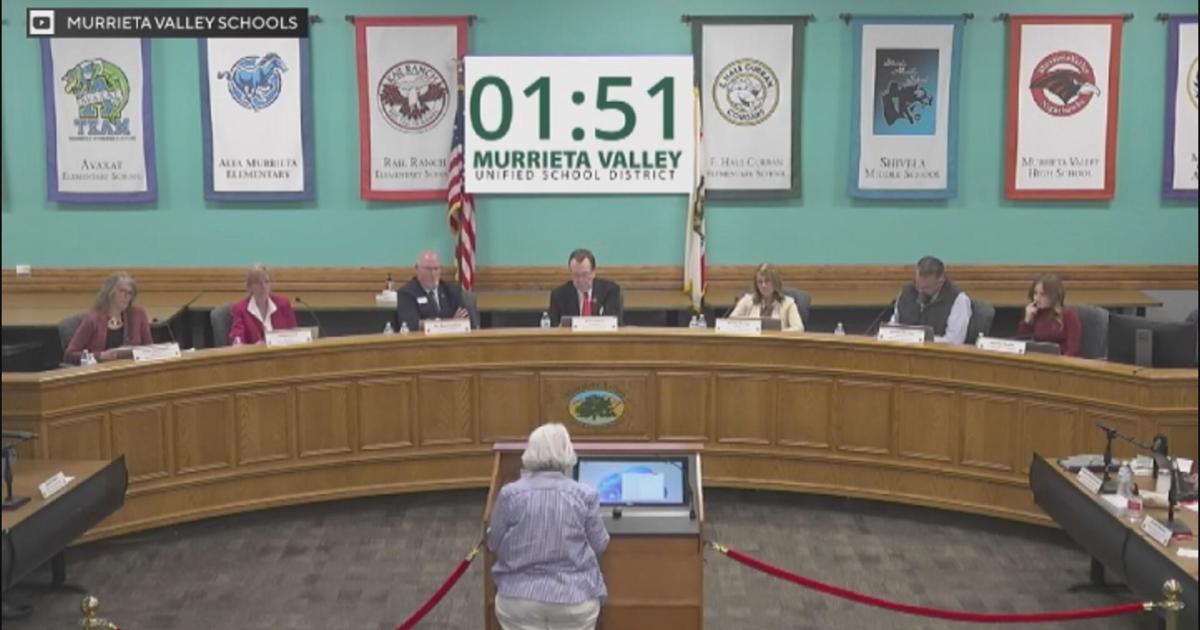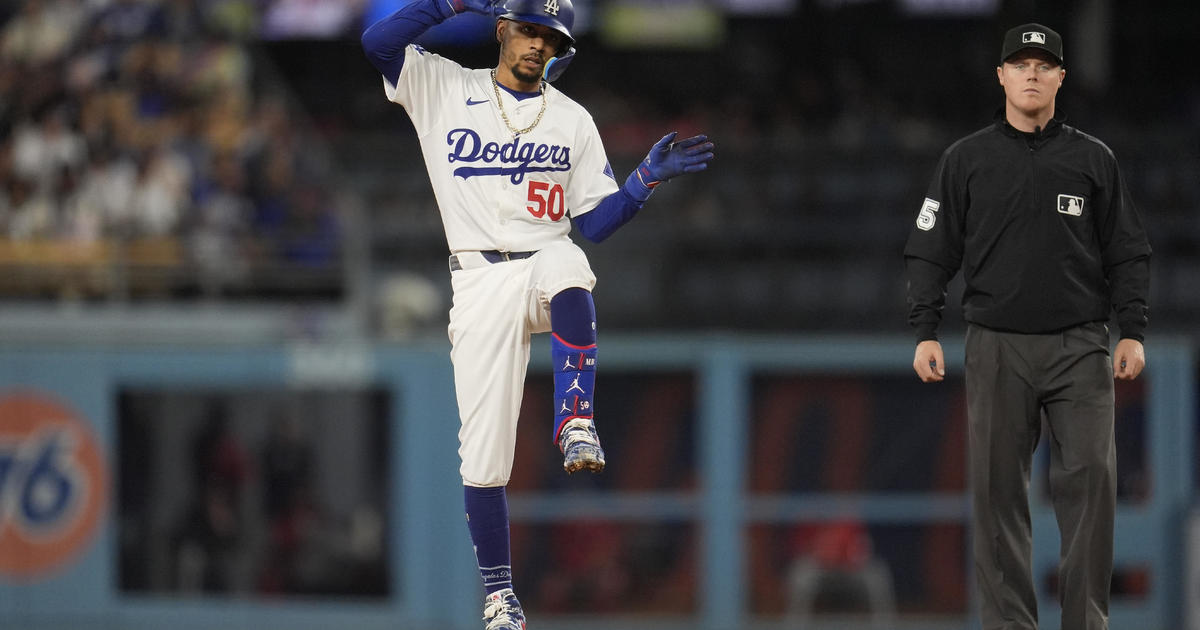UC Riverside, UCONN Men's Basketball Among Teams Banned From Playing Postseason
INDIANAPOLIS (AP) -- The NCAA's new academic requirements could give new meaning to the madness of March.
On Wednesday, three-time national champion Connecticut and nine other men's basketball teams were banned from the NCAA tournament because of poor Academic Progress Rate scores.
The penalties affect seven conferences, each of which must adapt to a new landscape for their league tournaments. Four conferences -- the Big East, Big West, Ohio Valley, Southland and Southwest Athletic -- said the banned teams cannot compete in their league tournaments.
"We'll have to adjust the bracket accordingly," Big East associate commissioner for men's basketball Dan Gavitt said Wednesday. "We would accommodate it in such a way that it would work. We would just have to eliminate a game and move someone up on the line."
Joining the Huskies on the sideline next March will be Arkansas-Pine Bluff, California-Riverside, Cal State Bakersfield, Jacksonville State, Mississippi Valley State, North Carolina-Wilmington, Texas A&M-Corpus Christi, Toledo and Towson.
Cal State Bakersfield, which became a full-fledged Division I member in 2010-11 and doesn't have a conference affiliation in basketball, could still be removed from the banned list because some of the school's data is still being reviewed.
Each of the record 10 schools fell below the mandated four-year cutline of 900 or the two-year cutline of 930 and will face additional sanctions. UConn, which had a four-year score of 889 and a two-year score of 902, must replace four hours of practice time with academic activities each week.
The APR measures the classroom performance of every Division I team. This year's data calculates rates from 2007-08 through 2010-11.
Some schools, such as Arkansas' men's basketball team, avoided penalties on the four-year score (894) because it met the two-year requirement. One team, Jacksonville State, was punished for failing to meet the requirements it agreed to last year when it was given a waiver, the NCAA said on a conference call with reporters.
Naturally, UConn drew the most attention as the first BCS school to face a postseason ban based solely on sub-par academics. The Huskies have been an NCAA tourney regular since 1990, winning 48 postseason games and national titles in 1999, 2004 and 2011.
Seeing the Huskies make the list of banned teams was no surprise, though.
UConn officials knew they wouldn't make the cutline last year and sought for a waiver from the ban this spring when it asked the NCAA to use the two most recent years of data. That argument was rejected. The Huskies now plan to make one more at a hearing later this summer in front of the committee on academic performance.
"I hope my colleagues come to the realization that if they change the rules and make this in effect that the NCAA has to change the way it review the data," Connecticut athletic director Warde Manuel said. "That's the only fair thing to do."
It's unlikely the committee will give in now.
"I do not expect us to make any changes retrospectively," said committee chairman Walter Harrison, president at the University of Hartford. "If we make changes, and I'm not sure that we will, would be prospectively."
League officials will now have to adapt the new college basketball landscape.
For the second straight year, the SWAC will delay the first 10-team tournament in men's basketball history. They had two teams banned last year and will return to that traditional eight-team format again next year because Arkansas-Pine Bluff and Mississippi Valley State will be ineligible.
The only other league with multiple teams on the banned list, the Colonial Athletic Association, has not said what it will do. A message was left by The Associated Press at the office of commissioner Thomas Yeager on Wednesday.
Four other leagues -- the Big West, Mid-American, Ohio Valley and Southland -- had one team on the list. The Ohio Valley Conference issued a statement saying Jacksonville State would be one of the four teams that will not compete in the league tourney, regardless of where it finishes in the standings. Conference officials said Texas A&M Corpus-Christi (Southland) and California-Riverside also will be barred from their conference tourneys. Big West commissioner Dennis Farrell wrote in an e-mail that each team finishing behind Riverside in the standings will move up one spot in the seeding process.
Officials from the MAC did not immediately respond to interview requests.
But, clearly, the increasing number of postseason bans could change conference tournaments.
"If there's one, two, three or four different teams in any given conference, it would have a major impact in how the bracketing is, how the tournament is run, ticket sales, television exposure," Gavitt said "I think that's the goal of the presidents -- to make the penalties more impactful, more meaningful."
Only three football teams received postseason bans -- Hampton, North Carolina A&T and Texas Southern. All are members of the Football Championship Subdivision and are considered historically black colleges or universities. The only other teams to get postseason bans were Central Connecticut State in men's soccer and Northern Colorado in men's wrestling.
In all, 54 teams fell below the 900 mark with roughly 80 percent (43) of them coming from what the NCAA defines as limited-resource schools.
Critics expected that much.
"The schools that are getting hurt are underfunded and HBCUs," said Jerry Guerney, an assistant professor at Oklahoma who works with the NCAA watchdog The Drake Group. "We all have, at major colleges, academic centers with as many as 20 academic advisers. So BCS schools will do fine, other schools not so much."
Despite the growth in penalties, the overall numbers are improving.
The new four-year average of 973 represents a three-point increase over last year's report, and scores in each of the four most visible sports also improved. Baseball jumped six points to 965, men's basketball had a five-point increase to 950, while women's basketball (970) and football (948) both improved by two points.
Overall single-year APR averages have increased every year since 2004-05, the second year data was collected, though only slightly from 2009-10 (973.8) to 2010-11 (974.0)
The most recent one-year scores for men's basketball and baseball both decreased from last year's report. Men's basketball went from 951.6 to 950.9, while baseball slipped from 966.6 to 963.9 over the same period. In football and women's basketball, the one-year numbers both increased slightly in this year's report.
NCAA President Mark Emmert acknowledged both the good and bad of the report, saying there was room for improvement and that he believes university presidents are firm in their belief that success in the classroom is every bit as important as it is on the playing field.
"We still have room for improvement," he said. "The NCAA's overall goal, of course, is to blend academics and athletics. The amount of support among university presidents for these eligibility standards remains extremely strong."



